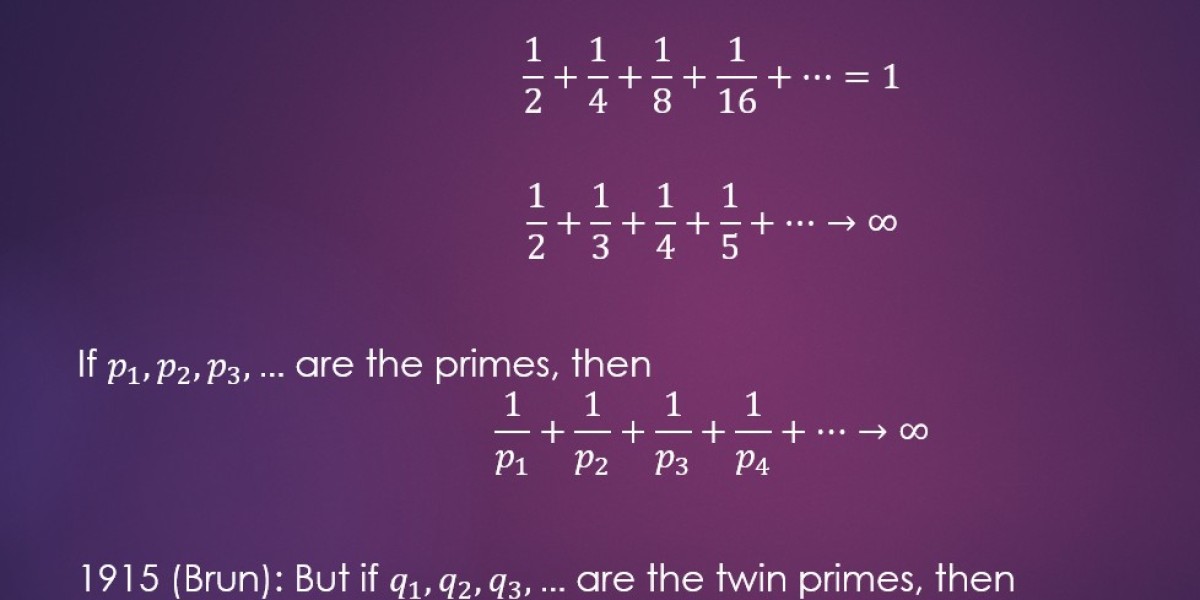The concept of a factorial, denoted by an exclamation mark (!) after a number, is a fundamental function in mathematics. Specifically, the factorial of a non-negative integer �, denoted as �!, is the product of all positive integers less than or equal to �. For example, the factorial of 5 (5!) is calculated as:
5!=5×4×3×2×1=120
This operation is not defined for negative numbers and the factorial of zero (0!) is defined as 1, following the convention for an empty product.
The factorial function grows very rapidly with the increase of �. As � increases, �! increases at a rate faster than exponential growth. This rapid growth has significant implications in various mathematical and practical applications, particularly in fields such as combinatorics, probability theory, and number theory.
Historical Context: The concept of factorial can be traced back to the early developments in combinatorics and number theory. The use of factorial-like calculations emerged in the works of Indian scholars in the context of Sanskrit prosody, as early as the 12th century. The Indian mathematician Bhaskaracharya famously provided examples of this factorial function in his book “Lilavati”.
The factorial symbol (!) itself was introduced much later. The notation seems to have been introduced by the French mathematician Christian Kramp in 1808. His work in developing the notation and theory of factorials was instrumental in standardizing the concept in mathematical literature.
The development and understanding of factorials were further advanced in the 18th and 19th centuries as mathematicians like Euler and Stirling explored the connections of factorials with other mathematical functions and approximations.
The factorial function was eventually extended beyond integers to complex and real numbers through the development of the gamma function, which generalizes the factorial to non-integer values. This extension was a significant step in advanced mathematics, particularly in the fields of analysis and number theory.
Overall, the evolution of the factorial function from a practical tool in combinatorics to an essential component of higher mathematical theory reflects the growth and development of mathematical thought from ancient to modern times.
The factorial function, while simple in its initial definition, has profound implications and applications across various domains of mathematics.
Understanding "5!"
Calculation of 5!: To understand the calculation of 5 factorial (5!), it's important to follow the basic definition of the factorial function. The factorial of a number � (denoted as �!) is the product of all positive integers from � down to 1. Thus, for 5!, the calculation involves multiplying all the positive integers from 5 down to 1. The sequence of multiplication can be expressed as:
5!=5×4×3×2×1
Breaking it down further:
- We start with the highest number, 5, and multiply it by the next lower number, which is 4. This gives us 20 (5 × 4 = 20).
- We then multiply this result by the next lower number, 3, resulting in 60 (20 × 3 = 60).
- Continuing this pattern, we multiply 60 by 2, which gives us 120 (60 × 2 = 120).
- Finally, multiplying 120 by 1 does not change the result (120 × 1 = 120), since any number multiplied by 1 equals itself.
This step-by-step multiplication showcases how factorials are a cumulative product of descending natural numbers.
Result: Following the calculation process, the final result of 5! is 120. This value is the outcome of systematically multiplying 5 by each number below it down to 1. The factorial function, especially with smaller numbers like 5, is straightforward and yields a manageable result. However, as the numbers get larger, the results of the factorial function increase exponentially, leading to very large numbers even for relatively small starting values.
The result of 120 for 5! not only serves as a direct answer to the calculation but also plays a crucial role in various mathematical and practical applications. For example, in combinatorics, 5! represents the number of different ways to arrange five distinct items in a sequence, emphasizing the factorial's importance in counting and probability problems.
Applications of Factorials
Combinatorics: In combinatorics, factorials play a central role in calculating permutations and combinations, which are fundamental concepts for counting arrangements and selections.
- Permutations: A permutation refers to the arrangement of a set of objects in a particular order. The number of permutations of � distinct objects is given by �!. This is because the first position can be filled in � ways, the second in �−1 ways, and so on, until the last position is filled in only one way. For example, the number of ways to arrange 5 different books on a shelf is calculated as 5!.
- Combinations: Combinations, on the other hand, refer to the selection of objects where the order does not matter. The number of ways to choose � objects from a set of � distinct objects is given by �!�!(�−�)!, known as the binomial coefficient. This formula uses factorials to account for the number of arrangements (permutations) and then adjusts for the fact that order is irrelevant in combinations.
Probability: Factorials are also crucial in probability theory, particularly in calculating the probabilities of various outcomes in discrete sample spaces.
- Sample Spaces: In problems where it's necessary to count the number of possible outcomes, factorials provide a way to calculate the total number of outcomes. For example, in shuffling a deck of cards, the total number of possible arrangements is 52!.
- Probability Calculations: Factorials are used in calculating probabilities of specific outcomes. For instance, in a lottery draw where the order of drawn numbers matters, factorials can help determine the probability of winning.
Other Fields: Factorials have a wide range of applications beyond combinatorics and probability, permeating various fields of science and mathematics.
- Algebra: In algebra, factorials are used in the expansion of binomials and in solving certain types of equations and inequalities.
- Calculus: In calculus, factorials appear in the formulas for Taylor and Maclaurin series expansions of functions.
- Number Theory: Factorials are significant in number theory for various functions and properties related to integers.
- Physics and Engineering: In physics, factorials are used in statistical mechanics, particularly in the derivation of formulas for entropy and distributions. In engineering, they help in the analysis of systems and algorithms.
- Computer Science: In algorithm design and analysis, factorials determine the complexity of certain algorithms, especially those involving permutations and combinations.
The versatility and fundamental nature of factorials make them an indispensable tool in a wide array of mathematical and scientific inquiries, underlining their importance in both theoretical and applied contexts.
Properties of Factorials
Growth Rate: The growth rate of factorials is one of their most notable properties. Factorials grow at a rate that is much faster than linear, polynomial, or even exponential growth. This is due to the multiplicative nature of the factorial function.
- Exponential Comparison: While an exponential function grows by repeatedly multiplying by a constant, a factorial grows by repeatedly multiplying by an increasing sequence of numbers. For example, 2� grows exponentially, but �! surpasses this growth rate quickly as � increases.
- Illustrative Examples: To illustrate, 5! = 120, and 10! is already 3,628,800. As � gets larger, the value of �! becomes extraordinarily large. For instance, 20! is around 2.43 × 10^18.
- Implications: This rapid growth has practical implications, especially in computing where calculating factorials for large numbers can be computationally intensive and can lead to integer overflow errors in programming.
Relation to Other Mathematical Functions: Factorials are closely related to several other important mathematical functions and concepts, such as the gamma function and Stirling's approximation.
Gamma Function: The gamma function (denoted as Γ(�)) extends the concept of factorials to the complex plane. For positive integers, the gamma function is defined as Γ(�)=(�−1)!. This extension allows for the calculation of 'factorials' of non-integer values. The gamma function is a vital tool in advanced calculus and analysis, particularly in integrals and series expansions.
Stirling's Approximation: Stirling's approximation is a powerful tool for approximating factorials, especially useful for large numbers. It is given by the formula:
�!≈2��(��)�
This approximation becomes more accurate as � increases. It's a crucial formula in fields such as statistics, physics, and engineering, providing a more manageable way to estimate and work with large factorials.
Other Connections: Factorials also relate to binomial coefficients and are used in the binomial theorem, which is a cornerstone in algebra and combinatorics. They appear in various series and sequences, like the Taylor series for exponential and trigonometric functions.
Understanding the properties of factorials, including their rapid growth and their relationship with other mathematical functions, is essential for grasping their utility and application in a wide range of mathematical and scientific contexts.
These properties also highlight the factorial function’s significance beyond its basic definition and its integral role in the broader landscape of mathematics.
Special Cases and Extensions
Zero Factorial: The concept of 0 factorial (0!) being equal to 1 might initially seem counterintuitive, but it is a well-established convention in mathematics, particularly important for consistency in various mathematical formulas and theories.
- Combinatorial Justification: In combinatorics, 0! = 1 provides consistency for formulas involving permutations and combinations. For example, the number of ways to arrange 0 objects (an empty set) is 1 — there is exactly one way to arrange nothing. Similarly, the number of ways to choose 0 items from a set of � items is also 1 (you choose nothing in one way).
- Mathematical Consistency: This definition is crucial for the validity of many mathematical formulas, such as the binomial theorem, where setting 0! = 1 ensures that the formulas hold even when �=0.
Negative Numbers: Factorials of negative numbers are undefined within the standard factorial function. This is primarily because the factorial function is a sequence of products starting from a positive integer and counting downwards to 1.
- Non-integer Extension Limitation: While the gamma function extends factorials to non-integers, it does not define factorials for negative integers. The gamma function has poles at all negative integers and zero, which means the function is not defined at these points.
- Conceptual Interpretation: From a combinatorial perspective, it's impossible to multiply a sequence of descending positive integers starting from a negative number and reaching 1, as the sequence would never converge to 1.
Fractional Factorials: The concept of factorial for non-integer values, often termed fractional factorials, is an extension of the factorial function beyond integers. This extension is principally achieved through the gamma function.
- Gamma Function: The gamma function, denoted as Γ(�), generalizes the factorial to complex and real numbers, except negative integers. For positive integers, Γ(�)=(�−1)!. For non-integer values, the gamma function is defined through an integral that generalizes the factorial product.
- Example with Half-Integer: A notable example is the factorial of a half-integer, such as 12!, which is � based on the gamma function.
- Applications and Implications: This extension has significant implications in various fields, such as complex analysis, where it is used in the study of complex functions, and in physics, where it appears in quantum mechanics and statistical mechanics.
These special cases and extensions of the factorial function underscore the depth and versatility of this mathematical concept. By extending the idea of factorials beyond the realm of positive integers, mathematicians have unlocked new pathways in the study and application of advanced mathematical theories.
Practical Examples
Understanding "5!" is essential in several practical problems and examples, which highlight the significance of factorials in real-world applications:
Arranging Objects:
- Problem: Suppose you have 5 different colored balls, and you want to know in how many different ways you can arrange these balls in a line.
- Application: The solution involves calculating the number of permutations of these 5 objects, which is exactly 5!. Each of the 5 positions in the line can be filled by any of the 5 balls, and for each of those, there are 4 choices for the next position, and so on, down to 1.
Scheduling and Planning:
- Problem: A small project team consists of 5 members, and a manager needs to determine the order of presentations for each team member.
- Application: The number of possible orders in which the 5 members can present is given by 5!. This calculation helps in understanding the total number of scheduling options available.
Cryptographic Algorithms:
- Problem: In simple cryptographic systems, a common method involves rearranging the letters of a message. If a system uses a 5-letter key, one might want to know the number of potential keys.
- Application: The total number of different keys that can be generated from 5 unique letters is 5!, representing the permutations of these letters.
Game Theory and Puzzles:
- Problem: In a puzzle game where you have to arrange 5 different pieces in a specific order to solve the puzzle, the number of potential arrangements you have to try could be important.
- Application: The total number of arrangements to try would be 5!, as each piece can occupy any of the 5 positions, with the others filling the remaining slots.
Scientific Experiments:
- Problem: A scientist has 5 different chemical compounds and wants to test all possible sequences of reactions, one after another.
- Application: The number of distinct sequences in which these reactions can be tested is 5!, ensuring that all possible combinations are explored for comprehensive results.
Sports Tournaments:
- Problem: In a round-robin tournament with 5 teams, where each team plays every other team exactly once, the organizer might want to know the number of different ways the matches can be scheduled.
- Application: While not a direct application of 5!, understanding factorial helps in grasping the complexity of scheduling and the number of potential match combinations.
Software Testing:
- Problem: A software application has 5 different modules that need to be tested in every possible sequence to ensure compatibility.
- Application: The total number of different testing sequences is 5!, representing every possible order in which the modules can be tested.
These examples demonstrate the utility of understanding "5!" in various practical scenarios, ranging from everyday planning and organization to more complex applications in cryptography, scientific research, and game theory.
The factorial concept, while simple, has broad implications in numerous fields, underscoring its fundamental importance in problem-solving and analytical thinking.
Conclusion
The factorial function, denoted by an exclamation mark (!), is a fundamental mathematical operation that has far-reaching implications and applications across various fields of mathematics and beyond.
Its importance and versatility are evident through its numerous applications, ranging from basic arithmetic to advanced mathematical theories.
Fundamental in Combinatorics and Probability: The factorial function is crucial in combinatorics, where it is used to calculate the number of ways to arrange or choose objects. This is key in solving problems related to permutations and combinations, which are foundational concepts in probability theory. Understanding factorials enables the calculation of probabilities in complex scenarios, such as in games, lotteries, or statistical sampling.
Rapid Growth and Implications: One of the remarkable properties of the factorial function is its rapid growth rate. This characteristic has profound implications, particularly in fields where large numbers are commonplace, such as in computational algorithms and data analysis. The factorial's growth rate often serves as a benchmark for understanding and managing computational complexity in algorithm design and analysis.
Extension Beyond Integers: The extension of factorials beyond integers, through the gamma function, has opened new avenues in advanced mathematics. This extension is not just a theoretical exploration but has practical implications in areas like physics, engineering, and mathematical analysis. It allows the factorial concept to be applied in contexts where non-integer values are involved, thereby broadening the scope of its application.
Connection with Other Mathematical Functions: Factorials are closely linked with various other mathematical functions and concepts, such as Stirling's approximation, which provides a practical way to estimate factorials of large numbers. These connections underline the factorial's role in the broader mathematical landscape and its integration with other mathematical theories and applications.
Practical Real-World Applications: Beyond theoretical mathematics, factorials are used in real-world scenarios, such as in scheduling, planning, cryptographic algorithms, and even in scientific experiments. This underlines the practical relevance of factorials, showing how a fundamental mathematical concept can have wide-ranging applications in everyday life and specialized fields.
Educational and Cognitive Significance: From an educational standpoint, the factorial function is often one of the first encounters students have with more abstract mathematical concepts. It plays a crucial role in developing problem-solving and analytical skills, especially in understanding the principles of counting and arrangement.
In conclusion, the factorial function is a cornerstone of mathematical computation and theory, embodying both simplicity in its basic form and depth in its extended applications.
Its versatility in solving a wide range of mathematical problems, coupled with its integration into various scientific and practical fields, underscores its enduring importance and utility in the realm of mathematics and beyond.
What does 5 mean in maths?
- In mathematics, the number 5 is a natural number that follows 4 and precedes 6. It is an odd number and a prime number, meaning it is only divisible by 1 and itself. In different contexts, the number 5 can represent quantities, positions, values, or a digit in a larger number. It plays a crucial role in various mathematical concepts, from basic arithmetic operations to more complex theories. In geometry, for instance, a pentagon is a five-sided polygon, reflecting the use of the number 5 in shapes and forms.
What does 5 factorial mean?
- The term "5 factorial," denoted as 5!, refers to the product of all positive integers up to 5. Mathematically, 5! is calculated as 5 × 4 × 3 × 2 × 1, which equals 120. Factorials are fundamental in combinatorics, probability, and many other areas of mathematics. In practical terms, 5! represents the number of different ways in which a set of 5 distinct items can be arranged in order. This concept is widely used in fields such as statistics, computer science, and physics.
What does -(-5) mean in math?
- In mathematics, -(-5) represents a double negative involving the number 5. When you negate a negative number, the two negatives effectively cancel each other out, turning the number into a positive. Therefore, -(-5) equals +5. This principle of double negatives is fundamental in algebra and is a key concept in understanding how to simplify expressions and solve equations.
How do you calculate %5?
- Calculating %5 generally refers to finding 5 percent of a given number. To calculate this, you multiply the number by 0.05 (since 5% is equal to 5/100 or 0.05). For example, to find 5% of 100, you would calculate 100 × 0.05, which equals 5. This calculation is commonly used in many practical scenarios, such as calculating discounts, interest rates, and statistical data analysis. In programming and computer science, however, "%5" might refer to a modulo operation, where it calculates the remainder of a division by 5.
What will be the 5% of 100?
- To calculate 5% of 100, you multiply 100 by 0.05 (since 5% is the same as 5/100, which is 0.05). The calculation is as follows: 100 × 0.05 = 5. So, 5% of 100 is 5. This kind of calculation is commonly used in financial calculations, such as determining discounts or interest payments.
How do you find 5% of 200?
- Finding 5% of 200 involves a similar process. You multiply 200 by 0.05. The calculation is: 200 × 0.05 = 10. Therefore, 5% of 200 equals 10. This method of calculating a percentage of a number is a basic mathematical skill useful in various practical scenarios, like budgeting or sales analysis.
How do I calculate 5% of 40?
- To calculate 5% of 40, you again multiply 40 by 0.05. The calculation is: 40 × 0.05 = 2. Thus, 5% of 40 is 2. This type of calculation is often used in everyday situations, such as figuring out a tip at a restaurant or calculating a small proportion of a quantity in recipes or material measurements.
What will be the 5% of 300?
- To find 5% of 300, you would multiply 300 by 0.05. The calculation is: 300 × 0.05 = 15. Hence, 5% of 300 is 15. Such calculations are frequent in finance for understanding percentages related to loans, savings, investments, or budgeting.
These examples demonstrate a straightforward method of calculating a percentage of a number. The key is to convert the percentage into a decimal (by dividing it by 100) and then multiply it by the number you are interested in. This basic mathematical operation is essential in various real-life contexts, emphasizing the practical importance of understanding percentages.



